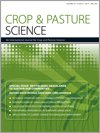We present a bio-economic model by combining a process-based grassland simulation model with an economic decision model that accounts for income risks and yield quality. The model is used to examine optimal nitrogen (N) application rates in a grass–clover system in Switzerland under current and future climatic conditions. Results for present-day climatic conditions suggest that an increase in N inputs has positive effects on yields but also leads to higher yield variability, yield distributions more skewed to the left and therefore higher downside risks. As a result, accounting for farmers’ risk aversion in solving the optimisation problem leads to lower optimal N inputs. Simulations with a climate change scenario that predicts higher temperatures throughout the year and lower rainfall amounts during the growing season indicate higher yields, increasing yield variability, and changes in yield quality. By allowing herbage prices to vary as a function of yield quality, we find overall lower optimal N inputs and more marked effects of risk aversion on optimal N levels under climate change than under present conditions. However, disregarding yield quality in solving the optimisation problem gives higher optimal N inputs under future conditions.
How to translate text using browser tools
27 June 2014
Implications of risk attitude and climate change for optimal grassland management: a case study for Switzerland
Robert Finger,
Pierluigi Calanca,
Simon Briner
ACCESS THE FULL ARTICLE
<
Previous Article
|

Crop and Pasture Science
Vol. 65 • No. 6
Jun 2014
Vol. 65 • No. 6
Jun 2014
bio-economic modelling
climate change
downside risks
grassland production
optimal management
risk aversion




